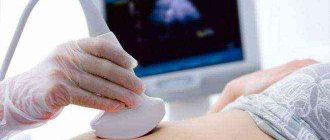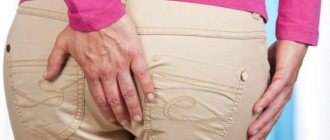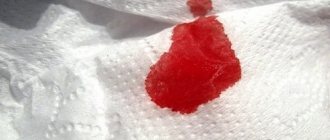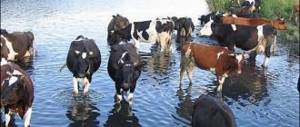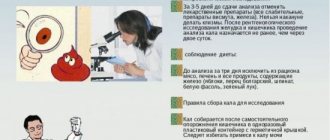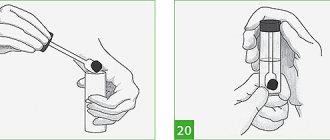Feces are one of the objective indicators of human health. By its shape, consistency, quantity excreted during one act of defecation, smell, impurities in feces - doctors judge the potential capabilities of the body and the state of the digestive system. The appearance of stool is especially important, on the basis of which the Bristol Stool Shape Scale was created in 1997 in Britain.
Its essence lies in comparing the stool of a healthy person with the stool of patients suffering from gastrointestinal disorders. This classification, focusing on the types of feces, is still used for diagnostic purposes by practicing physicians.
Decoding the Bristol scale comes down to comparing the appearance of stool with the time of its movement through the intestines.
At a normal rate of evacuation of feces, the liquid from them is absorbed by the walls of different parts of the digestive system in accordance with the norm. In this case, the exiting stool has a normal consistency.
If the speed of movement is slow due to impaired motor function of the intestine, obstruction of its lumen or stenosis, intestinal spasm, the shape of bowel movements changes. The liquid is almost completely absorbed from it through the intestinal wall, it thickens and becomes dry. This condition is called constipation. Rapid evacuation does not have time to allow the liquid to be absorbed, and the feces look shapeless, semi-liquid. This is how diarrhea develops.
Types of stool according to the Bristol scale
The classification of the Bristol scale allows you to make a preliminary assessment of the state of the gastrointestinal tract and conduct an approximate diagnosis of diseases of the digestive system. At the same time, attention should be paid to the fact that the diagnosis is preliminary and does not claim to be 100% reliable. Correct diagnosis involves a comprehensive examination of the patient using laboratory tests and instrumental examination.
The Bristol scale a priori believes that the shape of feces has 7 varieties:
- Large brown peas (goat or sheep) - round, dense, dry feces.
- Thick feces (sausage) - wide, short, shaped, voluminous.
- Feces in the form of a snake with cracks - heterogeneous, irregular, ribbon-like, narrow.
- Sausage-shaped thin feces - long, of normal consistency.
- Feces in the form of dragees are soft, viscous, of different thicknesses, have different sizes and thicknesses.
- Unformed stools are soft, viscous, thick, resembling jelly.
- Homogeneous feces - liquid, viscous, mushy.
Based on the scale, doctors interpret the results of stool tests as follows:
- Feces resembling type 1 to 3 bowel movements indicate the development of symptoms of constipation or spastic colitis. It is recommended to drink at least 2.5 liters of clean water, and add fiber, fruits and vegetables to your diet.
- Feces of groups 4 and 5 are accepted as the norm for a healthy person.
- Stools patterned after types 6 and 7 are indicative of diarrhea, with the seventh group considered the most dangerous because it precedes serious pathologies of the digestive system.
- The essence is dehydration and replenishment of fluid loss.
The undeniable practical value of the scale is that it can be used in diagnosing diseases in children over two years of age and, of course, adults of all ages.
Newborns have slightly different stool characteristics: semi-liquid, liquid feces, airy, unformed feces are the norm for them. So is loose stool, soft stool that does not cause distress to the baby. A mushy consistency is a normal physiological phenomenon for a small person. Only foul-smelling feces or stool mixed with thick mucus and jelly-like inclusions should cause parents concern. This is most often the result of genetic mutations or metabolic disorders.
What can the shape and size of feces indicate?
Doctors have long known that the shape and size of feces are characteristics of disorders in the digestive system. Therefore, the clinical manifestations of a particular disease are always considered in combination with an assessment of the condition of the feces. This is why the Bristol scale exists.
Large goat stool (type 1)
This type of feces looks like separate dense lumpy formations of different weight, size and color. Their cause is constipation. But not only poor intestinal motility contributes to the appearance of “peas”, dysbiosis leads to the same result. Goat stool can also form during chronic intestinal diseases, the growth of cancer that blocks the intestinal lumen and interferes with the evacuation of feces, or when there is a plug of worms and other parasites. Pregnancy and breastfeeding contribute to the formation of constipation, since against the background of changes in the hormonal balance in a woman’s body, the digestive organs malfunction and peristalsis slows down.
Drugs act in a similar way, in addition, causing symptoms of intoxication that paralyze the innervation of the intestinal walls. In this case, the act of defecation is accompanied by local pain, which quickly disappears. Feces during constipation are prickly, dry, with sharp, uneven edges - all this injures the intestinal mucosa, which leads to the occurrence of hemorrhoids, the addition of a secondary infection, and provokes deformed areas to bleeding. In this case, specialist consultation, examination and adequate therapy are necessary.
Wide thick sausage (type 2)
A tight, large-diameter, porous sausage with fibrous veins, granular inclusions of undigested food - leaves the rectum with effort, it is difficult for it to pass through the anus, it can be flattened. The act of defecation is painful. Why does she appear? Due to an abnormal diet, overeating, addiction to protein diets and the presence of hemorrhoids. Such voluminous feces constantly put pressure on the intestinal walls, causing irritation (IBS), destruction, bloating and flatulence, spastic disorders, gastritis.
Small sausage with cracks (type 3)
This type of stool has a small diameter and often has cracks. This suggests that this is the stool of a healthy adult. However, if bowel movements do not occur every day, then it is worth thinking about the formation of hidden disorders leading to constipation. You need to consult your doctor.
Flat long stool (type 4)
Ribbon-like, and sometimes thread-like, flat stool in a child is a type of normal feces. It may look like it has been flattened by an asphalt roller. It's all about bowel regularity. The absence of daily bowel movements, and then the appearance of dark brown stool, may indicate hemorrhoids or a latent cancer tumor. This requires a complete clinical and laboratory examination so as not to miss a serious disease.
Soft balls (type 5)
Airy rounds with clear and even borders always remind you of a lack of dietary fiber in the diet. Such balls appear as a result of a violation of the absorption function in the digestive system and have the ability to come out of the anus easily.
Stool quality in normal and pathological conditions
Feces (stool or feces) is the end product of digestion, which is formed as a result of complex biochemical processes in the gastrointestinal tract and is excreted from the body during bowel movements.
The main properties of feces are its quantity, consistency, shape, color and smell. Changes in these indicators may indicate various diseases.
In this article we will look at the quality of stool in normal and pathological conditions.
Normally, bowel movements occur 1-2 times a day without strong straining and painlessly. With pathology, there may be a lack of bowel movements for several days - constipation; there may also be too frequent bowel movements (up to 3-5 times a day or more) - diarrhea or diarrhea.
Forms of feces
For convenient classification of stool, the “Bristol Stool Shape Scale” was developed in England. According to this scale, there are 7 main types of feces. Type 1. Individual hard lumps, like nuts (difficult to pass) - characterizes constipation. Type 2.
Sausage-shaped, but lumpy - characterizes constipation or a tendency to constipation. Type 3. Sausage-shaped, but with cracks on the surface - a variant of the norm. Type 4. Sausage-shaped or serpentine, smooth and soft - a variant of the norm. Type 5. Soft lumps with clear edges (easy passing) - tendency to diarrhea. Type 6.
Fluffy, torn pieces, porous feces - characteristic of diarrhea.
Type 7. Watery, without solid pieces, entirely liquid - characteristic of severe diarrhea.
Using this scale, the patient can roughly assess whether he currently has constipation or diarrhea. Unfortunately, for people with chronic diseases, this scale does not always give an accurate result, so it is not recommended to diagnose yourself without consulting a doctor.
Amount of feces
Normally, an adult excretes approximately 100-250 grams of feces per day.
Reasons for decreased stool output:
- constipation (if feces remain in the large intestine for a long time, maximum absorption of water occurs, resulting in a decrease in the volume of feces);
- the diet is dominated by foods that are easily digestible;
- reducing the amount of food eaten.
Reasons for increased stool output:
- predominance of plant foods in the diet;
- disruption of digestive processes in the small intestine (enteritis, malabsorption, etc.);
- decreased pancreatic function;
- impaired absorption in the intestinal mucosa;
- decreased flow of bile into the intestines (cholecystitis, cholelithiasis).
Stool consistency
Normally, it has a soft consistency and a cylindrical shape. In pathology, the following types of feces can be noted:
1. Dense feces (sheep) – the cause of such feces can be:
- dysbacteriosis;
- staphylococcus;
- peptic ulcer;
- irritation of the walls of the colon;
- colitis;
- poor circulation in the intestinal walls;
- syndrome of insufficiency of motor and reflex function of the gastrointestinal tract;
- nervous system disorder, stress;
- insufficient fluid intake;
- recovery period after surgery;
- sedentary lifestyle.
If you experience similar bowel movements, you need to consult a specialist, since if you continue to have bowel movements of this nature for a long time, your well-being may deteriorate significantly.
Headaches and irritability may appear, intoxication of the body begins, and immunity decreases. Sheep feces can cause fissures in the anal canal, can provoke rectal prolapse, and cause the formation of hemorrhoids.
Regular constipation requires mandatory consultation with a specialist.
2. Pasty stool.
There can be many reasons for mushy stool. If you have similar stools and also notice an increase in the number of bowel movements (more than 3 times a day), contact a specialist to establish a diagnosis.
Pasty yellow stools can be caused by infections, inflammatory processes of the intestinal mucosa, disturbances in the functioning of the stomach (indigestibility of food), or rotavirus infection.
Pasty stools with mucus - may appear against the background of a common cold, after eating mucus-like foods, fermented milk mixtures, fruits, berry porridges.
Often, with a severe runny nose, mucous secretions enter the esophagus, then into the intestines and can be visualized in the stool. For an infection that is bacterial in nature.
Pasty stools may appear with pancreatitis, and the color of the stool may take on a gray color. This type of feces may indicate the presence of fermentative dyspepsia, chronic enteritis and colitis with diarrhea.
Diarrhea can also be caused by:
- dysbacteriosis;
- intestinal infections;
- tuberculosis of various forms;
- dysfunction of the thyroid gland;
- malabsorption syndrome;
- poor nutrition;
- kidney disease;
- insufficient digestibility of food;
- constant stress;
- allergic reactions;
- avitaminosis;
- diseases of the digestive organs in severe form;
- oncological diseases of the rectum.
3. Ointment-like feces - a fatty consistency of feces is characteristic of a disturbance in the functioning of the pancreas (pancreatitis), with cholecystitis and cholelithiasis, with liver disease, intestinal disease with malabsorption.
4. Clay or putty-like gray feces - characteristic of a significant amount of undigested fat, which is observed when there is difficulty in the outflow of bile from the liver and gallbladder (blockage of the bile duct, hepatitis).
5. Liquid feces.
- Loose, watery stools are most often a sign of infectious diarrhea or intestinal infection.
- Liquid green stool is characteristic of intestinal infections.
- Black liquid stool indicates bleeding from the upper or middle parts of the gastrointestinal tract.
- Light liquid stool is a sign of damage to the initial parts of the small intestine.
- Liquid yellow feces are a sign of damage to the final section of the small intestine. In this case, the stool occurs 6–8 times a day, watery, foamy.
- Liquid stool that resembles pea puree is a sign of typhoid fever.
- Liquid stools, similar to rice water, almost colorless, are a sign of cholera.
Unreasonable diarrhea in middle-aged and elderly people, lasting more than two weeks, often mixed with blood, is one of the symptoms that allows one to suspect a tumor of the small intestine.
Constantly loose stools occur with nonspecific educational diseases of the intestine - chronic enteritis, colitis, Croc's disease, after intestinal resection, etc.
Causes of diarrhea are also:
- dysentery;
- salmonellosis;
- rotavirus infection;
- helminths;
- fungi;
- nervous disorders, stress;
- with a lack or excess of digestive enzymes;
- in case of poisoning;
- after taking broad-spectrum antibiotics, iron supplements and other medications;
- for food allergies;
- gastritis with secretory insufficiency;
- after gastrectomy;
- stomach cancer;
- hepatitis, liver cirrhosis;
- adrenal insufficiency, increased thyroid function, diabetes mellitus;
- hypovitaminosis, severe metabolic kidney diseases;
- for systemic diseases (for example, scleroderma).
6. Foamy feces are a sign of fermentative dyspepsia, when fermentation processes predominate in the intestines.
7. Yeast stool – indicates the presence of yeast. May appear as cheesy, foamy stools like rising sourdough, may have strings like melted cheese, or have a yeasty odor.
Stool color
Normal color can vary from light brown to dark brown. In pathology, the following may be noted:
1. Light-colored feces with a pale tint (white, gray):
- may indicate that the person ate a large amount of potatoes and rice the day before;
- after X-ray examination using barium sulfate;
- after taking medications that include supplements such as calcium and antacids;
- pancreatitis;
- cholecystitis;
- hepatitis;
- stones in the gall bladder and bile ducts;
- cancer, cirrhosis of the liver.
2. Red feces:
- eating large amounts of beets, red gelatin, tomatoes, fruit juices..;
- disruptions in the functioning of the large intestine;
- the development of foci of intestinal inflammation, the presence of intestinal infection, as well as parasitic lesions (diarrhea, cramps, nausea, vomiting are also characteristic).
The reasons for having bloody stools are:
- the presence of cracks in the anal canal;
- haemorrhoids;
- inflammation of the intestines (the presence of diarrhea and cramps is also typical);
- colon polyps;
- colon cancer.
3. Yellow stool:
- fermentative dyspepsia (impaired carbohydrate digestion);
- poor digestion of food in the large intestine, as well as due to insufficiency of the pancreas.
4. Green feces:
- dysbacteriosis;
- after taking certain antibiotics;
- dysentery (also characterized by increased body temperature, abdominal pain, nausea, profuse vomiting);
- complication of ulcers or malignant tumors of the gastrointestinal tract;
- diseases of the hematopoietic organs.
5. Dark-colored feces:
- taking activated carbon;
- taking various medications that contain iron;
- eating blueberries;
- gastritis;
- colon cancer;
- duodenal ulcer (in the small intestine area);
- stomach ulcer;
- neoplasms in the upper gastrointestinal tract;
- inflammatory processes of the walls of the stomach.
If you find almost black stool that has a viscous consistency, contact a specialist immediately, as this may indicate the presence of blood in the stool.
Stool smell
Normally, stool has an unpleasant and not pungent odor.
- A pungent odor is characteristic of meat foods that predominate in the diet.
- Rotten smell - due to poor digestion of food (undigested food can be food for bacteria, it can simply rot in the intestines).
- Sour – may indicate the predominance of dairy products in the diet. Also noted with fermentative dyspepsia, after drinking fermented drinks (for example, kvass).
- Foul - with pancreatitis, cholecystitis, hypersecretion of the large intestine, with the proliferation of bacteria.
- Putrefactive – putrefactive dyspepsia, digestive disorders in the stomach, colitis, constipation.
- The smell of rancid oil is a consequence of bacterial decomposition of fats in the intestines.
- Weak odor - observed with constipation and accelerated evacuation from the small intestine.
Feces should sink gently to the bottom of the toilet. If stool splashes into the toilet water, this indicates insufficient dietary fiber.
If feces float on the surface of the water, this may be a consequence of eating a large amount of fiber, high levels of gases in the feces, or a large amount of undigested fat.
Poor flushing from the toilet walls may indicate pancreatitis.
Author Khvorostyankina Elena.
Source: https://www.medicalolimp.com.ua/article/kachestvo-stula-v-norme-i-pri-patoloii
Is thin stool a pathology?
Typically, in adults, stool is thick and sausage-like; this can normally be large pieces of stool, or it can come out in small portions. The most important thing is that the stool is regular, plasticine-like in consistency and does not cause discomfort to the person during the act of defecation.
Ribbon-shaped feces can appear due to a nutritional disorder, when a person’s diet is unbalanced and lacks plant foods. A sedentary lifestyle in addition to this diet can lead to pencil-shaped stool leaving the intestines.
Photo
Band-shaped stool may result from drinking excessive amounts of alcoholic beverages. The large intestine stops functioning normally under the influence of alcohol, and disturbances in the shape and frequency of stool appear. First, hard, then loose stools, difficulty in passing feces, changes in the diameter, color and consistency of feces - all these are consequences of alcohol abuse and should be abandoned, otherwise ribbon-shaped feces will not be the only symptom of a bad habit.
If the stool comes out in thin sausages for these reasons, then there is no need to worry too much. After all, on the one hand, this is not so bad, you can adjust your diet and everything will return to normal. But if thread-like or snake-like feces continue to bother a person even after eliminating harmless causes, then this is a reason to undergo diagnostics and determine the factors causing the appearance of irregularly shaped feces.
What should stool be like?
Normally, stool is considered normal if it has the consistency of toothpaste. It should be soft, brown, 10-20 cm long. Defecation should occur without much strain, easily. Small deviations from this description should not immediately cause alarm. Stool (or feces) can change depending on lifestyle and dietary errors. Beets give the output a red color, and fatty foods make the stool foul-smelling, too soft and floating. You need to be able to independently evaluate all the characteristics (shape, color, consistency, buoyancy), let's talk about this in more detail.
Types of stool vary in color. It can be brown (healthy color), red, green, yellow, white, black:
- Red color. This color may result from ingesting food coloring or beets. In other cases, the stool becomes red due to bleeding in the lower intestine. Everyone's biggest fear is cancer, but this can often be associated with diverticulitis or hemorrhoids.
- Green color. A sign of the presence of bile. Stool moving too quickly through the intestines does not have time to turn brown. A green tint is a consequence of taking iron supplements or antibiotics, eating large amounts of greens rich in chlorophyll, or supplements such as wheatgrass, chlorella, spirulina. Dangerous causes of green stool are Crohn's disease, celiac disease, or irritable bowel syndrome.
- Yellow. Yellow feces are a sign of infection. This also indicates gallbladder dysfunction, when there is not enough bile and excess fat appears.
- White stool is a sign of diseases such as hepatitis, bacterial infection, cirrhosis, pancreatitis, and cancer. The cause may be gallstones. Stool does not stain due to bile obstruction. The white color of feces can be considered harmless if the day before you took barium before an x-ray examination.
- Black or dark green indicates possible bleeding in the upper intestine. A sign is considered harmless if it is a consequence of consuming certain foods (lots of meat, dark vegetables) or iron.
Why does thin stool appear?
A decrease in stool diameter and a change in the frequency of bowel movements may be a cause for concern if neither of the above factors suits the person. In an adult, ribbon-shaped stool may be the first sign of illness.
Thread-like stool in an adult can be caused by:
- Hemorrhoids are the most common cause of thin stool. The disease occurs in adult men and women equally.
- Representatives of the fair sex may have small-diameter feces during pregnancy.
- Irritable bowel syndrome (IBS) often results in the formation of normal-looking stool, but only ribbon-like stool.
- Benign or malignant neoplasms in the intestines do not make themselves felt for a long time, and the first symptom is often flat, ribbon-like stool.
- Helminthic infection often leads to major intestinal problems in an adult. And if a ribbon comes out with the feces, and the feces themselves are flat in shape, then we can safely assume this disease.
- Prostatitis in adult men is not a rare problem, leading to the passage of stool in small pieces or in the form of a thin line.
In addition to these reasons, narrow stool can be observed for some time after surgery on the intestines, which is not a pathology, but requires control, because flattened stool should return to normal, which means that the treatment process is in full swing.
Haemorrhoids
With hemorrhoids, nodes appear inside the rectum or outside. These nodules are small at first, but begin to grow actively over time. If the hemorrhoid is located inside the intestine, then all the feces will come out of the rectum in a ribbon. This is due to the fact that the knot narrows the intestinal lumen and when feces reach this place they have to leak through a small and narrow passage, which automatically leads to the feces becoming flattened.
If such a symptom of hemorrhoids as flat feces has already appeared in an adult, then you should immediately consult a doctor, because the disease has already gone quite far in its development.
Pregnancy
During pregnancy, many women report stool - it is long, thin, smooth, there are practically no difficulties with defecation, the only thing that happens is short-term constipation.
There is no need to worry about this. It is only important to prevent the development of chronic constipation and hemorrhoids, which often bother pregnant women. If such a symptom is observed rarely, and after childbirth it completely disappears, then there is no need to worry. The problem was resolved on its own and now all that remains is to take care of your health and the well-being of the baby.
Irritable bowel syndrome
With IBS, the first symptom of the disease in adults is constant abdominal pain. The next sign of progression of the pathology is scanty feces, which is not replaced by diarrhea, and so on in a circle. After a while, relief comes - the pain becomes a little weaker, and the feces come out in the form of a ribbon. The appearance of flat stool indicates that the intestines are not functioning properly, and pain is just another confirmation of this.
The difficulty with this disease is that it is not known exactly what causes the functional disorder. The reason may be poor diet, stress, or taking various medications, but not everyone develops IBS. Therefore, it is important to always adhere to the right lifestyle in order to reduce the risk of developing pathology.
How to determine the cause?
To understand why thin stool appears in an adult, it is necessary to undergo a comprehensive diagnosis. It includes:
- Digital examination of the rectum to identify hemorrhoids.
- Stool analysis for coprogram, tank culture and worms.
- X-ray examination of the intestines.
- Probe examination of the intestines (a biopsy may be necessary if the presence of neoplasms is suspected).
If thin stool appears in a pregnant woman, then additional examinations and tests may not be necessary. It is necessary to consult a gynecologist and only if there are other symptoms, he can decide to conduct a diagnosis.
Video
Absolutely all adults should first think about their diet and lifestyle. It is necessary to add more plant-based foods and proteins to your diet and eliminate all harmful foods - chips, soda, pizza, etc. It is advisable to stop drinking alcohol.
If a disease is discovered during diagnosis, you should follow all the doctor’s recommendations. This will help eliminate the cause of the disease and its symptom - thin stool, as well as other signs. If you seek help at an early stage, then almost any illness can be cured completely and even the consequences can be avoided.
Practicing gastroenterologist. Work experience: 9 years in a private clinic. If you haven't found the answer to your question, ask the author!
For many people, the topic of poop is so personal that they don’t want to share it or talk about it with anyone. But they may not realize that sometimes it is useful to find out what kind of poop other people have, what form of stool they have, color and perhaps even smell. It's quite normal to show interest in this. The shape of your poop, exactly as well as the color, can suggest or hint at some possible malfunctions of the body. If you do not want to share very personal processes with other people, then we will help you keep the secret and tell you what shape and size feces are and what it can mean.
When visiting a doctor, it is not uncommon to hear a question regarding poop; the doctor may ask what shape, color, and how often you relieve yourself. Some people are stunned by such questions; they do not even understand the purpose of this question and how decisive a role it can play already at the interview stage, including speeding up treatment and making the correct diagnosis. English doctors decided to correct the problem of patient embarrassment and developed a so-called scale for assessing stool forms - the Bristol Stool Forms Scale.
The Bristol Stool Shape Scale was developed by doctors in England to more conveniently classify the shape of poop and was introduced into use in 1997.
With the help of the Bristol Stool Shape Scale, it is easier for patients to overcome the psychological barrier. Looking at clear pictures, a person can not describe to the doctor the shape of his excrement, but name the desired type or point to a picture depicting the most suitable shape of poop. It is also useful and convenient for self-testing at home.
What can the shape and size of feces indicate?
Now let's take a closer look at each of the types of poop described in the Bristol scale.
First type of stool
Individual hard balls that look like nuts are also called goat or sheep poop. Shit of this form is characteristic of acute dysbacteriosis. The first type of poop is hard and abrasive. Their dimensions are approximately 1-2 cm. Due to their hardness and prickliness, they can cause pain during fighting. With sheep poop, there is a high chance of anal canal damage and anorectal bleeding.
Second type of poop
This type of feces is a large, sausage-shaped poop with a lumpy structure. This type of feces is characteristic of constipation. The diameter of the poop is about 3-4 cm. Since the diameter of the maximum opening of the anal canal diaphragm is less than 5 cm, defecation is accompanied by damage and can cause a laceration of the anal canal. Due to being in the intestines for too long, about several weeks, the feces acquire such huge sizes. The reason for the formation of such stool can be chronic constipation, as well as hemorrhoids, anal fissures and delayed bowel movements. This type of stool can cause irritable bowel syndrome and small intestinal obstruction due to the constant strong pressure on the intestinal wall.
The third type of feces
This type of poop is similar to the previous one, with the exception of smaller sizes, about 2-3.5 cm in diameter. It has a sausage shape and cracks on the surface. A smaller diameter indicates that defecation occurs more often than with the second type. At the same time, the third type of bowel movements indicates hidden constipation. It is accompanied by minor flatulence, which is caused by dysbiosis. People with this type of stool typically suffer from irritable bowel syndrome. Such poop can cause all the adverse effects of the second type. It also contributes to a faster deterioration of hemorrhoids.
The fourth type of poop
The shape of these poops can be called a standard. The dimensions in diameter are about 1-2 cm, in length - usually within 18 cm. This type of shit is typical for defecation once a day.
Fifth type of feces
These poops are shaped like soft balls with distinct edges. The diameter of such a chair is 1-1.5 cm. Such feces are typical with 2-3 bowel movements per day. They, like the fourth type, are an excellent indicator.
The sixth type of feces
Signs of the sixth type are soft, fluffy stools with torn edges. If you can control the urge to defecate and are able to tolerate it if something happens, then this stool can be considered normal. It may characterize colon hyperactivity. The causes of such stool may include dehydration, overexertion, blood pressure, excessive sensitivity to certain spices, high mineral content in water or ingredients in food that cause a laxative effect.
How is sheep feces treated?
In the vast majority of cases, sheep stool is associated with dysfunction of the colon. Problems with peristalsis (the ability to move intestinal contents) appear due to any gastrointestinal diseases. Experts say the main reasons are dysbacteriosis and the appearance of staphylococcus.
According to experts, the main reason for the development of the condition is a decrease in the evacuation capacity of the colon. Such changes quite often occur if a person is faced with various pathological conditions of the endocrine glands or, for example, disorders in the functioning of the nervous system.
In addition, sheep feces may well occur when:
- the person is experiencing serious stressful situations;
- not drinking enough fluid;
- medications that contain active enzymes are used;
- surgical interventions are performed;
- leads a sedentary lifestyle.
Thus, there may be quite a few possible factors for the occurrence of the presented symptom. That is why it is very important to pay attention to its symptoms, as well as how diagnosis and treatment are carried out. Only in this case will it be possible to avoid the development of complications and critical consequences.
When talking about the treatment of sheep feces, they traditionally mean the so-called complex therapy. It is aimed not only at combating the leading pathological condition, but also at eliminating all existing problems with stool.
To eliminate the problem of sheep feces, drugs based on lactulose are most often prescribed, namely as laxative components. The presented list contains such names as Normaza, Lactusan and some others. In no case should you forget about some antispasmodic drugs, in particular Duspatalin or Mebeverine.
Also, the recovery course may well contain antitoxic components (Fervital, Zubicor and others). An equally significant part of the therapy are components that are designed to stabilize the state of the intestinal microflora (Linex, Bifiform). Of course, all of them should be used only after consulting a specialist.
Treatment will be adequately effective only if you adhere to a specific diet rich in a component such as fiber. It should also be compiled only by the attending physician. In this case, the patient is strongly recommended to lead an active lifestyle as much as possible, drink at least two liters of water daily, and also try to avoid stressful situations and overexertion.
If, after a complete course of using certain medications, no improvements in intestinal activity are identified, then to determine the causes of this disease, you will need to undergo a full gastroscopic examination. Of course, it should include fibrogastroscopy and colonoscopy.
On the Bristol Poop Shape Scale, round poop is type 1. They arise as a result of infrequent bowel movements. Due to their long stay in the intestines, their color becomes dark, almost black, and their consistency becomes denser. When a person tries to poop, the intestinal walls begin to contract convulsively, which leads to the separation of feces into balls.
The most common cause of round feces is dysbacteriosis. But there are other equally common culprits for the appearance of feces in the form of balls, these include disruption of the colon and insufficient peristalsis.
The appearance of poop balls is also affected by your lifestyle. Poor nutrition, a sedentary lifestyle, and personal stress leave their mark on the functioning of the gastrointestinal tract. The intestines react very sharply to external influences and the emotional state of its owner.
If you are dehydrated or you consume too little liquid in food, or often eat dry food, then pellet stool occurs due to insufficient liquid. Normal feces contain about 80% liquid. With less content, the shit begins to disintegrate into lumps and has an abrasive structure.
